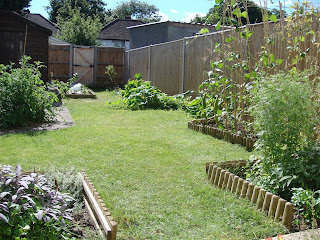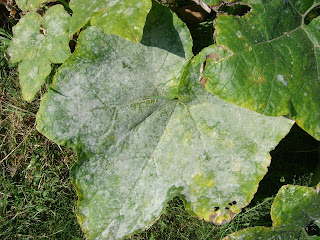I was wrong in my last post. I thought my garden had reached its peak and it was all downhill from here.
 |
| This week in the garden |
 |
| Squash and cucumbers growing along the ground |
Powdery mildew looks like this:
Then this:
I am currently controlling it by ripping off the leaves I find it on. I figure, so long as I leave each plant with at least 70% of its leaves, I'm doing more good than harm by removing affected leaves. Alternatively you can spray them with neem oil, but I find that less effective than ripping the affected leaves off (I should really be cutting them off carefully with scissors, as you don't want to shake them and get spores everywhere). Once you've removed the leaves, you need to put them in the bin or the garden waste that the council collects, as if you put them in your compost, you'll just infect your compost and any plants you put it on. I'll probably try neem oil as a last ditch attempt once the powdery mildew's taken hold, but, based on last year, I think at most it will make it spread more slowly, not stop it.
The cucurbits are finally beginning to produce decent sized fruits. I ate an undersized cucumber last week.
And this week they're bigger than the cucumbers you get in the shops already, so Greek salad of mainly tomato and cucumber for me for lunch.
My courgettes are getting there as well.
Monty Don says we're too pick them as soon as they're ready as they become marrow-sized in the blink of an eye. I think I'm going to leave this one another couple of days though, as it's the only one that hasn't been eaten by slugs or just fallen off, so I want it to be big enough to provide me with a meal's worth of courgette by itself.
I also have my first red tomato, although absolutely all the rest are green. I don't know why this one decided to go for it on its own, although I'm planning to eat it soon in case it's the only one I get (I've had tomato disasters before).
I don't even know if it's gardener's delight or moneymaker, as my tomato patch is far too much of a jungle to tell which stem comes from which plant and the labels are in any case buried beneath mounds of foliage.




































